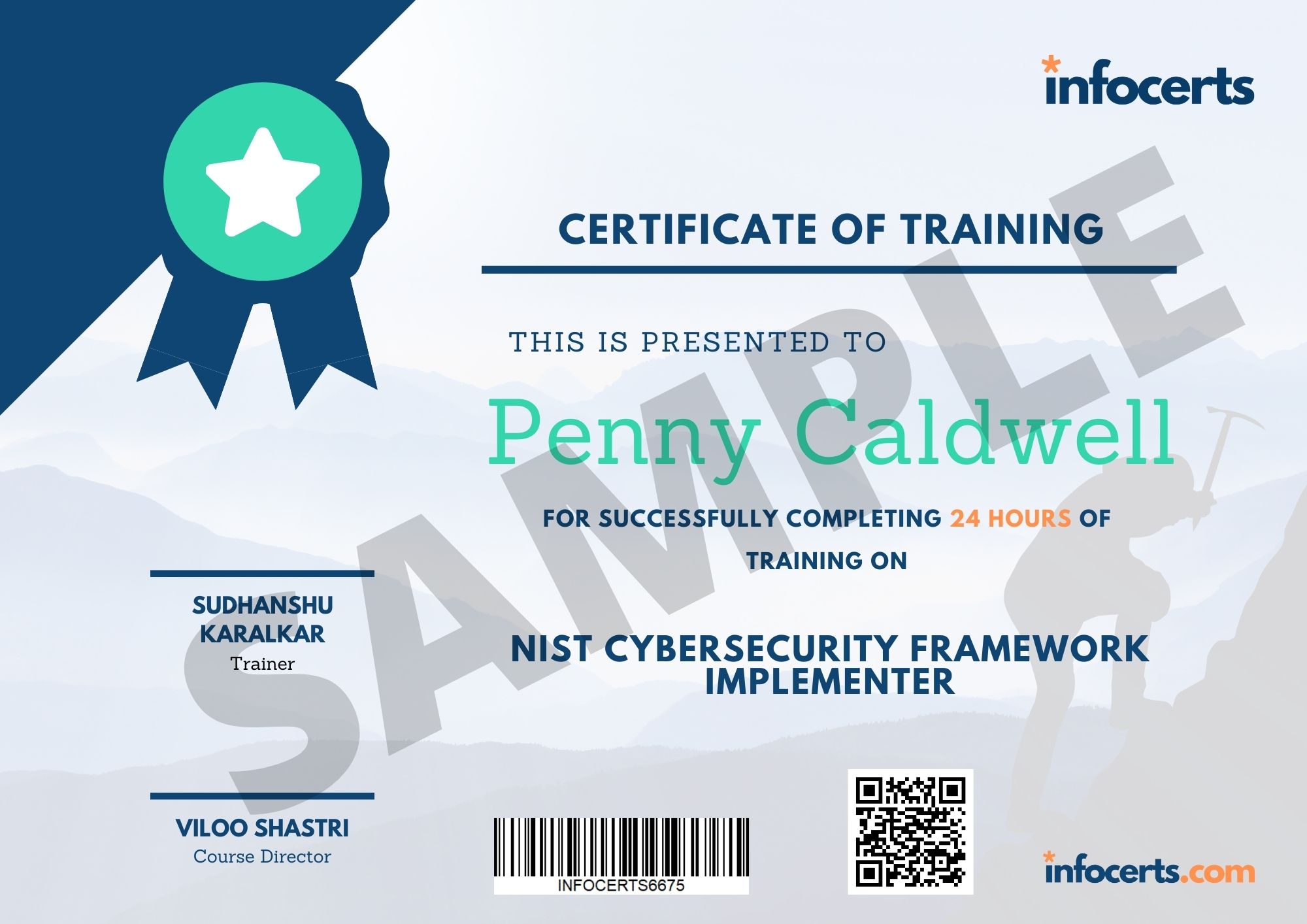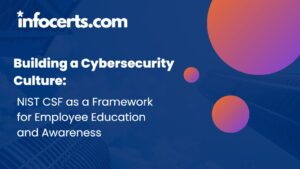NIST Cybersecurity Framework Implementer Training & Certification
Understand the NIST Cybersecurity Framework and its core components. Identify and assess cybersecurity risks in their organizations. Develop a cybersecurity strategy based on the NIST CSF. Implement the NIST CSF in their organizations. Continuously monitor and improve their cybersecurity posture.
Register Today
Jobs related to NIST
This training course is designed to provide participants with an in-depth understanding of the NIST Cybersecurity Framework (CSF) and the necessary knowledge and skills to effectively implement the framework in their organizations. The course will cover the five core functions of the framework, as well as the implementation process, best practices, and case studies of successful implementations.
By the end of this course, participants will be able to:
Understand the NIST Cybersecurity Framework and its core components. Identify and assess cybersecurity risks in their organizations. Develop a cybersecurity strategy based on the NIST CSF. Implement the NIST CSF in their organizations. Continuously monitor and improve their cybersecurity posture.
Course Outline:
Module 1: Introduction to the NIST Cybersecurity Framework
- Overview of the framework and its components.
- The five core functions of the framework.
- Understanding the implementation process.
Module 2: Identifying and Assessing Cybersecurity Risks
- Conducting a cybersecurity risk assessment
- Identifying and prioritizing critical assets and systems
- Analyzing threat and vulnerability information
Module 3: Developing a Cybersecurity Strategy
- Creating a cybersecurity plan based on the NIST CSF
- Mapping the plan to organizational goals and objectives
- Developing policies and procedures to support the plan
Module 4: Implementing the NIST Cybersecurity Framework
- Implementing the five core functions of the framework
- Identifying and selecting appropriate cybersecurity controls
- Integrating cybersecurity into business processes
Module 5: Monitoring and Improving Cybersecurity Posture
- Continuous monitoring of cybersecurity controls
- Identifying and responding to cybersecurity incidents
- Evaluating and improving the effectiveness of cybersecurity programs
Throughout the course, participants will go through implementation process of NIST CSF.
Software Development Company – A Software company needs to implement NIST CSF to improve cybersecurity, compliance, competitive advantages & Risk Management
- What does NIST CSF stand for?
Improving Critical Infrastructure Cybersecurity
The National Institute of Standards and Technology (NIST) Framework for Improving Critical Infrastructure Cybersecurity (NIST Cybersecurity Framework) organizes basic cybersecurity activities at their highest level.
- What are the 5 NIST CSF categories?
They include identify, protect, detect, respond, and recover. These five NIST functions all work concurrently and continuously to form the foundation where other essential elements can be built for successful high-profile cybersecurity risk management.
- Why is NIST CSF important?
Using existing guidelines, standards, and practices, the NIST CSF focuses on five core functions: Identify, Protect, Detect, Respond and Recover. These categories cover all aspects of cybersecurity, which makes this framework a complete, risk-based approach to securing almost any organization
- What is the difference between ISO 27001 and NIST?
NIST 800-53 is more security control driven with a wide variety of groups to facilitate best practices related to federal information systems. ISO 27001, on the other hand, is less technical and more risk focused for organizations of all shapes and sizes.
- What is the key objective of the NIST Cybersecurity Framework?
A key objective of the Framework is to encourage organizations to consider cyber security risk as a priority similar to financial, safety and operational risk, while factoring in larger systemic risks inherent to critical infrastructure.
Sample Certificate
Latest NIST Blog Post
Building a Cybersecurity Culture: NIST CSF as a Framework for Employee Education and Awareness
Introduction: In today’s digital landscape, organizations face an ever-growing number...
Read More


